| New Jersey Division of Fish and Wildlife |
|
| 2000 Arctic Search for the Red Knot July 8, 2000 |
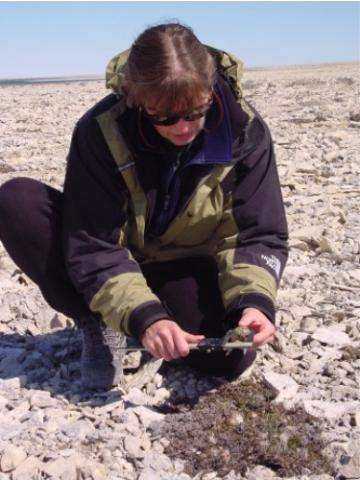
|
| The team shifted focus in the last two days. While continuing the search for new nests, focusing on the ridge south of the base camp, we also began more rigorous studies of the nesting pairs already located (above, Kathy measures eggs). We have 7 nests within 5 km of the camp, most within a short distance of our atv track. |
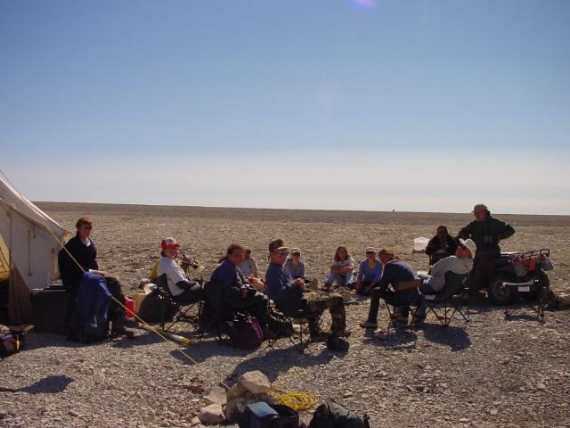
|
| After a long planning session we separated into two teams each tracking 3 nest pairs and a third team tracking one nest which may have hatched. Over the next 4 days we will monitor movements of the birds that are not incubating. We have already learned that the birds are spending most of their time within 1 km of the nest, most within 0.5 km. It appears the birds defend a territory, possibly to facilitate nest defense. All the nests are within a short distance from wetlands which the birds appear to share with birds from other nests. |
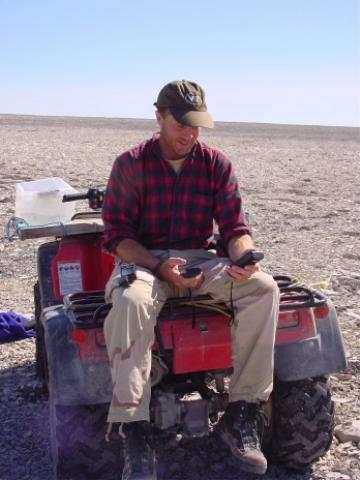
|
| Brad (above, entering waypoints into a GPS unit) and Barry followed several birds throughout the day and were surprised at how much time they put into the defense of their territories and the small amount of time spent feeding. |
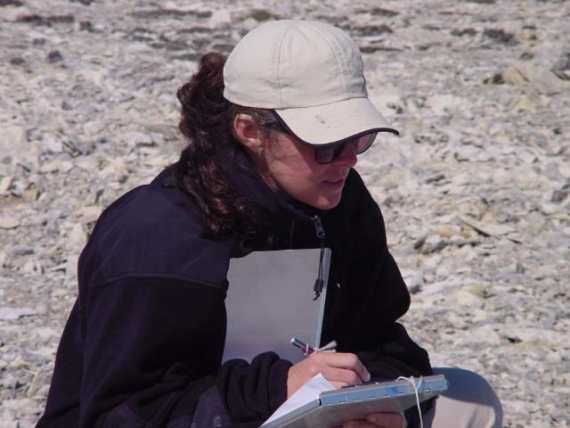
|
| Two nests had no eggs yesterday and we are unsure whether they were lost to predators or the eggs have hatched. We won't know for sure until we do more telemetry and find a brood. But in one day of work Kathy, Graciela, Mandy (above, taking nest habitat measurements) and Sherry have found that the transmittered birds are staying within 0.5 km of the nest. The telemetry study will also create a good opportunity for visual observations. The object of our second study is to classify the behavior of sighted single birds for one minute periods. Knots are notoriously secretive so observations are difficult. The transmitters will help locate birds visually. |
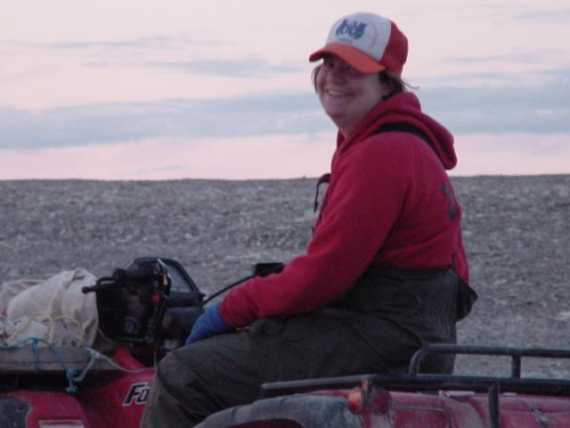
|
| We finally started the study of incubation period. Liz (above) and Johnny stayed up all last night in order to get hourly observations of nest birds, both visual and telemetric, in order to determine when the pair switches incubation. After 12 hours it appears birds switch asynchronously depending on the nest pairs. |
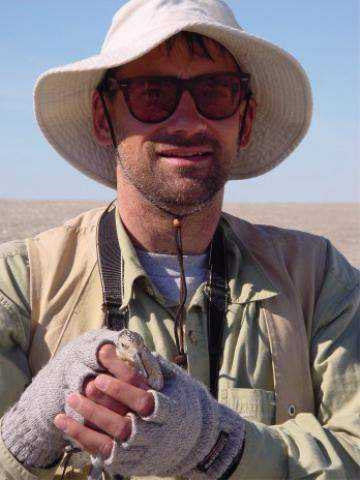
|
| Mark, Rick (above) and I went north to finish banding the other bird nests. |
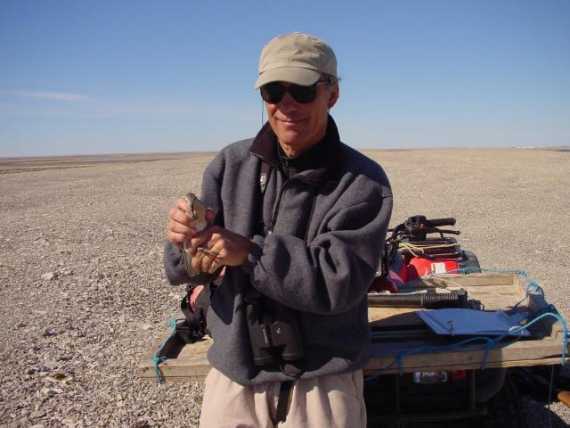
|
| Afterwards we went nest searching and Mark found another nest. Here I am with the bird from that nest. |
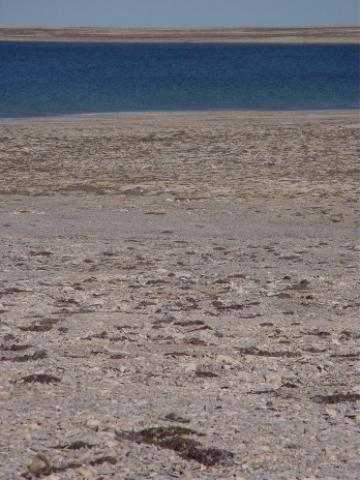
|
| From what we learned we can now limit our searches to the east or north sides of ridges, in areas with low lichen patch density in a substrate of small rocks, like the area pictured above. When we find a nest we move quickly to an area at least 0.5 km away. |
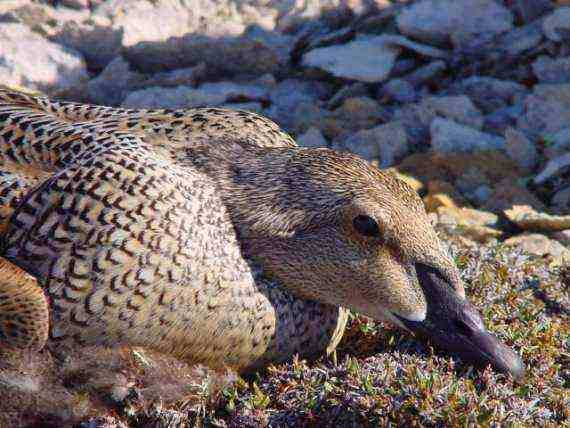
|
| Other birds beside the red knot use this area. We found this female king eider on its nest. |
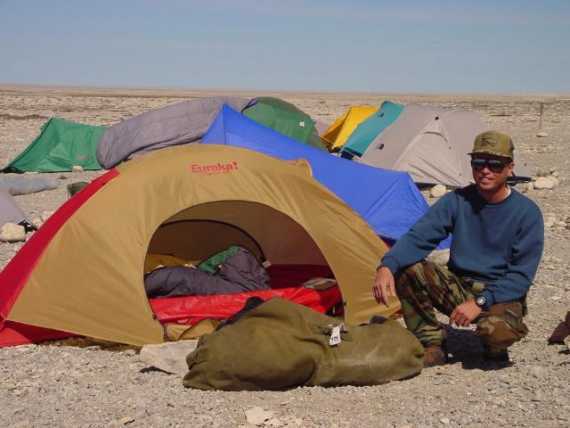
|
| With the rest of our camp in the background, Bruce relaxes outside his tent. |